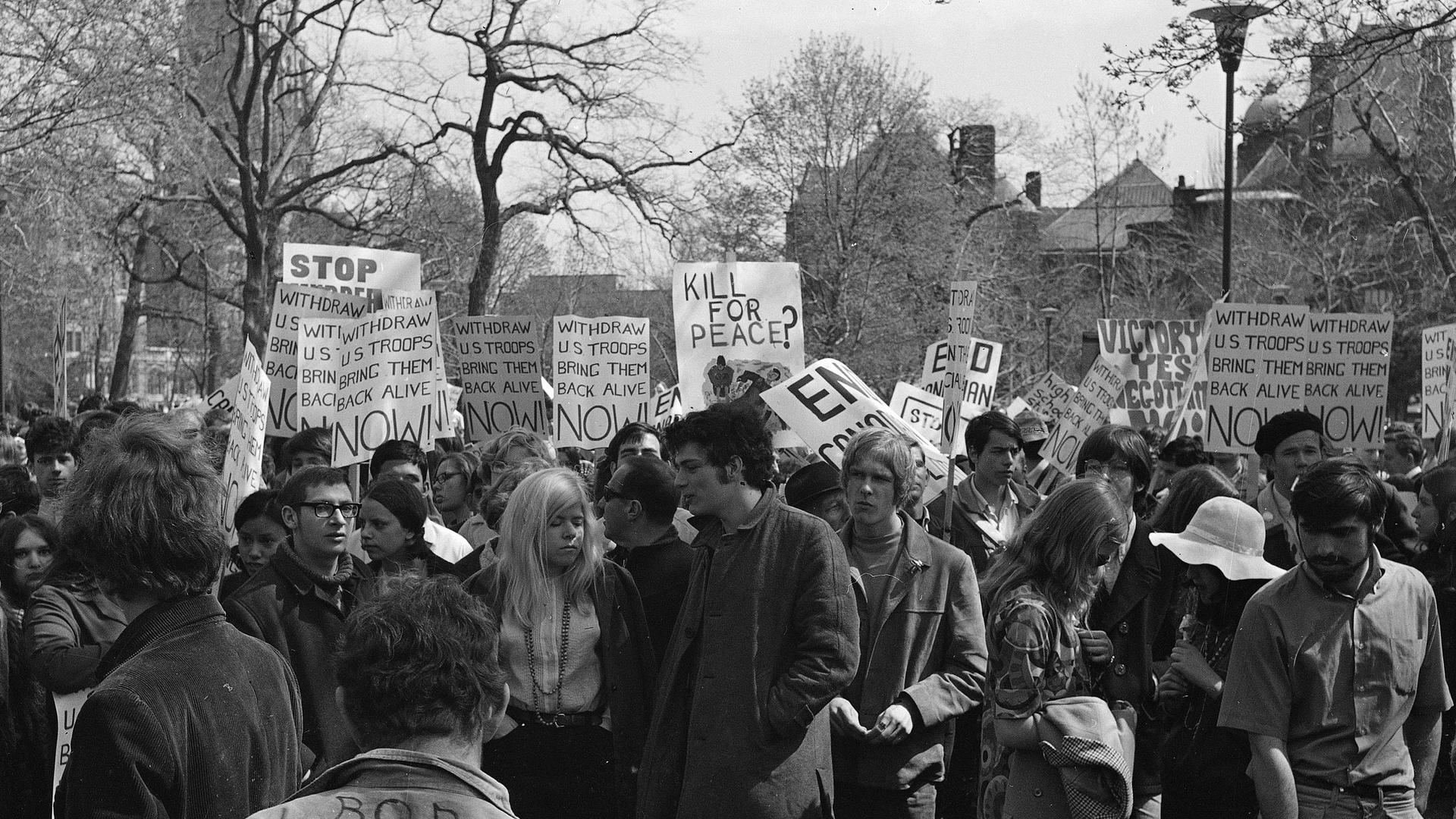One Thursday night in the winter of 1973, Jim Holland was partying in the Houston home he shared with roommates when the phone rang. It was the chair of his local draft board.
“He said, ‘Son, I’m holding your orders in my hand right now,’” Holland recalled, 50 years later. “‘In two weeks, you’re going to be wearing army boots in Fort Hood.’”
He managed to avoid the draft and crossed into Canada in British Columbia. There, Holland said, he found like-minded people and landed a forestry job.
“I thought that was the top of my vision for my life. I was living in these mountains planting trees, you know, just hook, line and sinker. That was it. Jimmy boy’s now a Canadian.”
The Vietnam War spawned a powerful movement of war resisters and draft dodgers, and many young men like Holland fled north into Canada. The Canadian government has estimated that as many as 40,000 young Americans crossed the border. Some made their new homes in big cities like Toronto and Vancouver, while others sought more rural escapes, and they changed the region forever.
“There was an immediate culture clash. Not just because they were American,” explained scholar Kathleen Rodgers, who wrote a book on the subject called “Welcome to Resisterville.” “More than the fact that they were American was the fact that they were countercultural, and they represented this entirely new way of living; people that had been there for generations were fairly conservative, had conservative values. And this group did not.”
Gary Wright saw it firsthand. Wright was one of those who slipped out of the US in 1968 to start his new life in Canada after being placed on an FBI watchlist for his student activism related to the war.
“So, there was the usual number of, let’s see, fistfights, car burnings, you know, arguments on street corners, boycotting businesses,” Wright said.
But in time, the newcomers settled in. When US President Jimmy Carter offered to pardon draft dodgers in 1977, about half of those who had fled ended up staying in Canada.
Canada benefited from the influx of idealistic newcomers, who integrated easily into Canadian society. In fact, Wright, who was from Montana, became so much a part of town life in New Denver, British Columbia — including serving as mayor for more than two decades and sitting on the regional board — that he was awarded a national honor for public service.
The Americans who came during the ’60s and ’70s helped build the region’s current identity — a blend of back-to-the-land hippiedom and counterculture rebellion. Cannabis grow-ops, some of the country’s biggest music festivals and a strong environmentalist movement are all still thriving there, decades later.
“I think any immigrant group changes, basically, the national fabric to some extent, if they have the ability to do that,” Wright said.
But Canadians’ enthusiasm for war resisters has sometimes gone a bit far for some. In 2004, a group proposed erecting a statue celebrating Canada’s embrace of draft dodgers. The statue was to be put up publicly in Nelson, British Columbia, about 120 miles north of Spokane, Washington.
It caused an immediate uproar. Veterans’ groups threatened boycotts of the tourism-heavy city.
“I think a lot of the negative attention came from talk radio in the United States,” Rodgers, the scholar, said. “Basically [asking], ‘How could they be commemorating “cowards”?’”
Eventually, the city rejected the statue. Some of the draft dodgers and war resisters themselves, including Wright, breathed a sigh of relief.
“I’m proud of what I’ve done,” he said. “But we all should be pretty proud of what we’ve done, somewhere along the way. And either we all deserve a statue or we don’t.”
Many draft dodgers say they prefer to make their mark in subtle ways. They became teachers, environmental activists and politicians.
Holland became the mayor of Kaslo, British Columbia, and founded a successful jazz festival. Corky Evans, from Berkely, who had come to Canada as a war resister, was elected to the British Columbia Legislature. He was appointed to senior government roles, including the minister of transportation and the minister of agriculture. He even helped renegotiate a major treaty with the US over the Columbia River.
One war resister, Bob Inwood, who went to high school and college in San Jose, California, is credited with the iconic design of the historic downtown areas of the West Kootenays. Quaint towns like Revelstoke, Rossland, and Nelson all owe their charm to Inwood, who left his home for good during the draft.
“For young adults across the country, who are looking for somewhere to kind of escape the city, do something different, go back to the land, Nelson is a magnet,” Rodgers said. “And it continues to be, just simply because it has this reputation and this legacy that really comes from that era.”
Our coverage reaches millions each week, but only a small fraction of listeners contribute to sustain our program. We still need 224 more people to donate $100 or $10/monthly to unlock our $67,000 match. Will you help us get there today?
